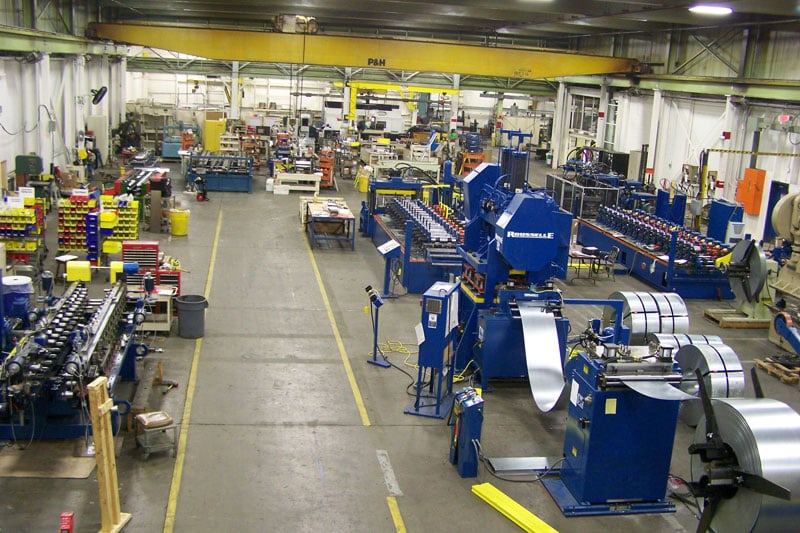When you're trying to improve the efficiency of your roll forming operations, your choice of machinery and tooling has a significant effect on productivity levels, product quality, and more. In order to make those machinery decisions, you need to understand the difference between different machine features and how they impact the product you're able to put out in a certain amount of time. One of these features you need to get familiar with is the uncoiler, which comes in single and double varieties. In this post, we'll explain the differences between a single uncoiler vs. double uncoiler for roll forming and how you can choose the right machine with the features your operation needs.
Single Uncoiler or Double Uncoiler: What's the Difference?
The main difference between a single uncoiler and double uncoiler setup in your roll forming process has to do with throughput. When you’re working with a single uncoiler, your machine has one mandrel (or arm), your technicians can only change over to the next coil once the current coil is completely run through the roll former. This is a time-consuming process that cuts down on your roll former’s runtime and therefore, increasing costly downtime where product cannot be produced. Most “standard” uncoilers are single ended.
However, with a double uncoiler, your techs will have two mandrels that both feed into the roll former. This means that while one mandrel is running, the next coil can be loaded and ready on the other mandrel, generally with the help of a forklift, crane, or coil car. Similar to rafting in the roll stands, the ability to load the machine offline cuts down significantly on downtime and practically eliminates time lost to the multiple changeovers that might be needed in a day with a single uncoiler. With a double uncoiler, you have the opportunity to increase throughput because changeover is so much faster with a second mandrel.



